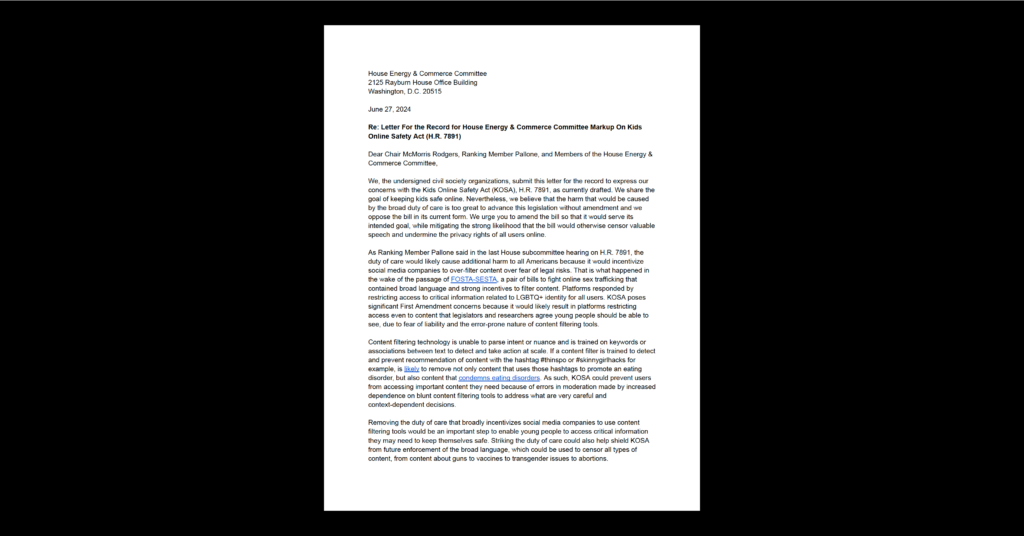Equity in Civic Technology, Privacy & Data
Courts Recognize Constitutional Harms from Invasive School Surveillance
This fall, a federal trial court in Ohio ruled that certain uses of remote proctoring violate students’ right to be free from unreasonable searches under the Fourth Amendment. The court recognized that some aspects of remote proctoring technology intrude on the “core places” where society recognizes “reasonable and legitimate privacy interests—namely, the home.”
As schools continue to rely on remote proctoring and similar technology, they should be cognizant of the importance of protecting students’ privacy away from campus.
The case underscores the harms, and related legal implications, that invasive technology can have for students, who may have no real opportunity to opt out of giving school officials and contractors views into their homes and other private spaces. In the Ohio case, a professor required students testing remotely to use their laptop cameras to show a proctor their work area. This came as a surprise to the students, as the professor had previously indicated they would not require a room scan; instead, the students were informed of the room scan requirement less than two hours before the exam.
The student who filed the lawsuit had no realistic opportunity to opt out of the room scan and no way to avoid allowing the proctor into private areas in his home. With health issues placing him and his family members at risk, he could not take the exam in person, and only his bedroom provided a quiet space to take the exam. That meant risking revealing private papers on his desk and medications in his room in a video that was then recorded and stored.
The Ohio ruling comes as college and K-12 students and families are increasingly aware of the extent to which schools can see into students’ personal lives through technologies in addition to remote proctoring — and the legal implications of that surveillance. Schools have increasingly contracted with private companies to scan students’ messages, emails, and documents, and record their browsing histories, both on devices provided by the school and on students’ personal devices.
As CDT research shows, 89 percent of teachers report that their schools use technology that tracks students’ online activities, and 18 percent of teachers report that their school tracks students’ activities on their personal devices. Moreover, fewer than half of teachers in CDT’s research reported that this tracking is limited to school hours, suggesting that schools are regularly and routinely monitoring what students are doing in their home environments.
Not only is the use of these technologies often unsupported by evidence demonstrating their efficacy, but their invasion of students’ online lives has disproportionately harmed marginalized groups of students. Student activity monitoring has outed LGBTQ+ students, subjected Black, Hispanic, and LGBTQ+ students to disproportionate discipline, and chilled the access of students with disabilities to online resources.
These harms are compounded when students have little opportunity to opt out of surveillance technologies’ use. Students may be required to use devices provided by the school or their income, family status, or disability might limit their options for alternatives — a fact demonstrated by recent CDT research showing that low-income students are disproportionately subject to school surveillance online.
A lack of transparency or well-established policies governing data and technology can further undermine students’ ability to meaningfully opt out of the surveillance. For example, although 65 percent of teachers report that students must sign a form with details on student activity monitoring, only 47 and 39 percent of parents and students respectively recall those details being shared. This was similarly the case in Ohio, where the professor’s sudden change in policy gave students little opportunity to opt out of the room scan.
As the Ohio court observed, “It is well-settled that the home lies at the core of the Fourth Amendment’s protections.” Those protections are violated by intrusive technology whose efficacy is unsupported by evidence and that provides students no meaningful opportunity to opt out. The decision in Ohio is a major win for students and their privacy in its recognition that the use of technology in students’ homes requires additional protections. Even as technology has blurred some lines, the privacy of the home remains protected, as do students’ lives away from school, a fact recognized by the Supreme Court.
Schools have both a legal and ethical duty to protect students from invasive surveillance through transparency, clear policies, and a meaningful opportunity to opt out and use less invasive alternatives.


